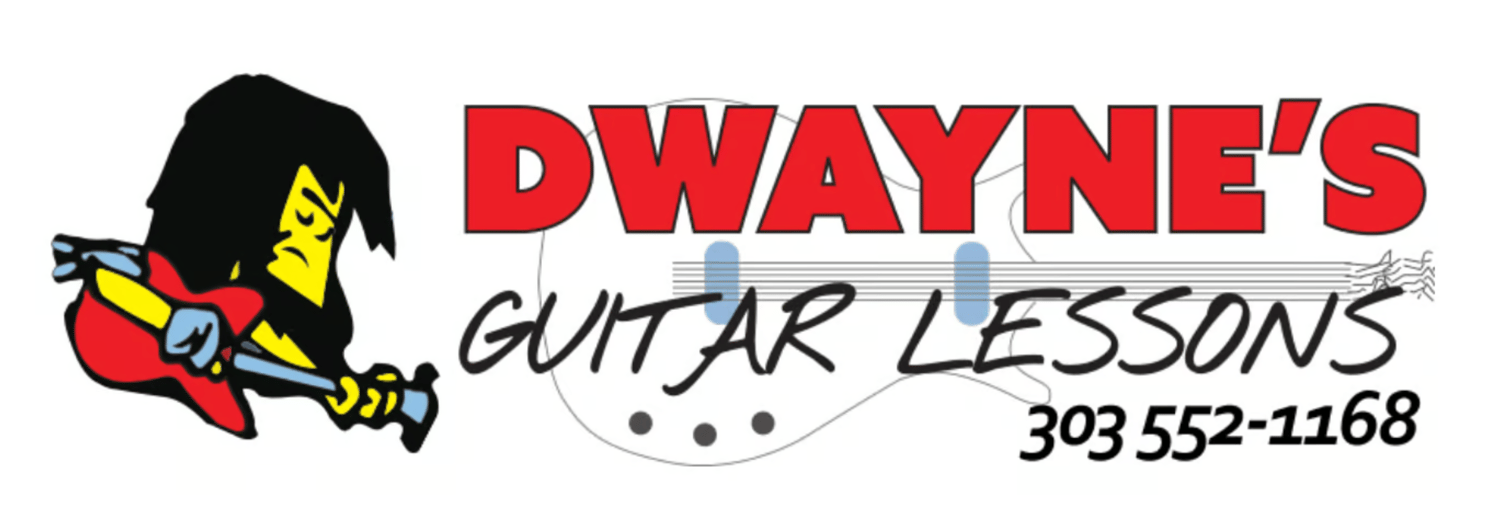In this lesson, we will learn how to make playing guitar scales sound more like music. It is not enough to just learn the scales. You want to learn certain techniques that will bring them to life and make them sound pleasant to the ear. Your goal is to create a solo that makes people go "Wow, how did you do that?"
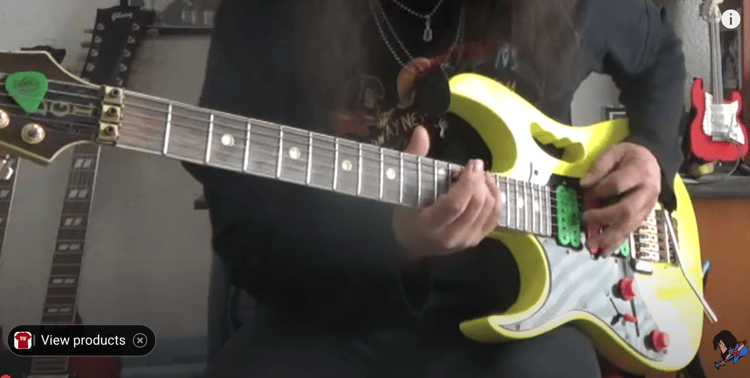
Take it in steps
Learn to make scales sound like music is done in steps. Very much like a child has to go through steps or stages of development. You will have to do the same. The first thing a child has to do is learn to stand. Once this is accomplished, the child has to learn to walk by putting one foot in front of the other.
Then, and only then, can the child learn to run. This is the same thing. We must learn this in steps. Take proper steps to get to where we're trying to get to. Make scales sound like music. So, let's look at the steps necessary to make this happen.
Step 1: Learn your scales
The first thing you need to do is learn the scales. These are what's going to give you the foundation of notes that are going to create the road map necessary to enhance your guitar playing. These can be used for playing lead as well as rhythm.
Although there are many scales you can play for this purpose, I recommend starting with the pentatonic scales. They're easy to play and found in hundreds of your favorite songs. Start with learning scale pattern 1. There are 5, so you could learn to play one a day for 5 days. Don't worry about what key you're playing in or anything like that, just learn the pattern of notes. This is step one.
The pentatonic scales

Step 2: Learn it in different positions
Once you get these down in one position, you want to learn to play them in different positions. Different locations along the fretboard. Start with the first scale pattern (the most popular) and play it at the 5th fret. Once you have it down there, try it a the 7th fret, 10th fret, 12th fret, etc.
While doing this, work on proper hand positioning. I recommend you use all 4 fingers as well. To do this effectively, take notice of where your elbow is located when you play. If your elbow is sticking out, it's hard to use the 4th finger, but if you bring it in, this is much easier.
Watch The Video Lessons Below
Step 3: Learn personality traits
These are things such as hammer-ons, pull-offs, slides, bends, vibrato, etc. These are the things that are going to begin to make the scales sound like music. I recommend starting with hammer-ons and pull-offs.
Hammer-on

These are where you play a finger on a note, pick that note, and then hammer onto the next note without picking it. Hence, the word hammer on.
Pull-off

This is the opposite. You put two fingers down on the same string, pick one note, and pull off to the note behind it without picking the note. Hence, the word pull off.
The techniques are similar and are indicated by an arc between the two numbers. Work on these daily, and your ear will begin to recognize them in songs, and this is where the excitement and fun in learning begins to happen.
Step 4: Play along the fretboard
Once you have these down, play them along the fretboard. Work on such things as slides. These are very common techniques as well.
Slides

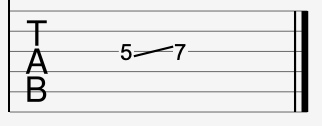
Slides can be done in both directions. You pick a note and the string either down, or up to the next fret. This is indicated by a slant line between the two numbers, like the examples above.
Step 5: Test your strength and finger dexterity
One thing about playing these types of techniques on the guitar is that they help to build finger strength and dexterity. One thing you always want to be doing is testing yourself to make sure you've got these down. One way to do this is with trills. These are repeated hammer-ons.
Trills

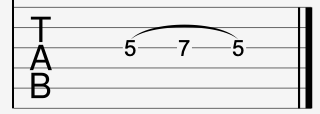
As you can see, a trill is just a hammer-on that is repeated over and over again. I recommend you watch the video lesson to see how this is done. The diagram next to it is a hemmer-on, pull-off. This is indicated by an arc over 3 numbers. Working with these techniques will develop strength and finger dexterity.
Step 6: Alternate picking
In addition to having some of these fundamental principles down that I have mentioned here in this lesson, you also want to work on alternate picking. This is where you pick a note, or several notes, up and down.
Alternate picking

As you can see, you pick down, up, and then back down again. This will help to increase speed and accuracy in your guitar playing. Alternate picking can also improve your timing, precision, and ultimately, give you the ability to play more complex passages of lead guitar playing.
Final thoughts
When it comes to making scales sound like music that you hear in your head, or in a song you like, it requires daily practice. A lot of daily practice. Like they say, "What you put in, is what you get out!" This is no different. Just take it in steps, and figure out what step you are at and proceed from there. Now, if you'd like to accomplish this faster, I recommend you follow a system of learning. When you study a little here and study a little there, it creates gaps in your learning.
These can come back to haunt you later down the line. This is why I recommend you take it step by step. Aside from private one-on-one lessons, this is the quickest way to get results. I know, because this is the way I learned many, many years ago, before the internet. It is also why I authored and self-published my book.
Lead Guitar Wizardry Volume 1
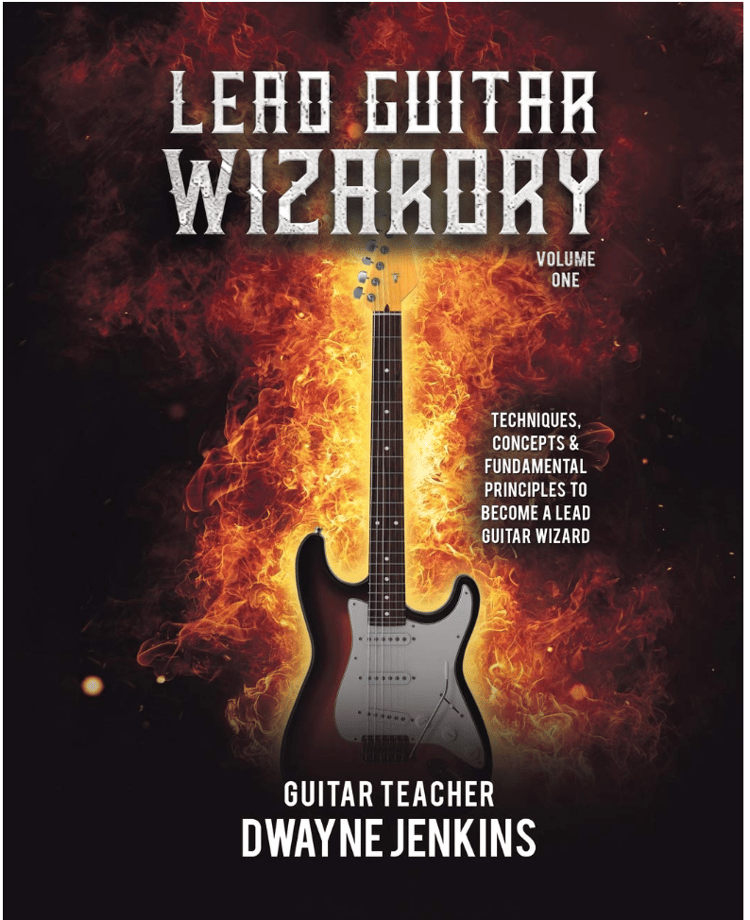
This book will teach you exactly what you need to know to make your guitar scales sound like music, and not just music but well-thought-out solos. If you follow the lessons as instructed, you won't just be playing solos, you'll be playing Hot Rockin' Solos! You'll have your friends and family going, "Wow, how did you do that?"
Of course, this will take daily study, practice, and the development of a wizard's mindset. If you do that, there will be no stopping you. Lead Guitar Wizardry Volume 1 is loaded with diagrams, notation, and easy to learn step-by-step lessons that anyone can benefit from. No matter if you've had no previous musical training.
Private instruction is also available
In addition to my method books, I also offer private one-on-one instruction. This option is great as well because you get one-on-one time with the teacher, customized less plans, secret insights from an experienced professional, and an enjoyable learning experience.
So grab the book and try it out. If you study and practice, you'll be amazed at what you can accomplish, and if more help is needed, contact me at my website, and we'll schedule a time to talk and discuss details.
Thanks for your time, and remember to have fun with your learning.
Until our next guitar lesson, take care.
Sincerely, Dwayne Jenkins


